A whitewashed spire emerged from the greenery amid a bevy of sleek and modern skyscrapers. Its Gothic-inspired windows were each fitted with wooden shutters, letting just enough tropical sun light penetrate into its nave. As the church of the Anglican Diocese of Singapore, also the country’s largest, the 19th century Saint Andrew’s Cathedral is strategically located at downtown Singapore in a neighborhood filled with the country’s finest colonial buildings.
Just around the corner a railing mounted with lamps followed the curves of a multi lane road, a part of the street circuit used for the annual Singapore F1 Night Grand Prix.
Within a short walking distance northeast another beautiful vestige from the past rested at a busy intersection. Its name bespoke its reputation, well-known beyond the tiny country’s geographical borders. Many come to this beautifully designed hotel for its signature drink: the Singapore Sling. But some simply look for an authentic experience of a time long gone when the British still ruled the island. Under its latticework-laden veranda a mid-aged man dressed up in colonial attire welcomed every guest as his predecessors had done for generations. Raffles Hotel is in and of itself one of Singapore’s true icons.
We then walked southwest, down St Andrew Road where a few minutes later we discovered an even more impressive grand structure from the past. Right across a cricket ground at Padang, the Old Supreme Court of Singapore stood gracefully despite the revitalization work it was undergoing. Its turquoise-colored cupola sat above ornate allegorical sculptures supported by six Corinthian capitals, giving the early 20th century building a true neo-classical appearance.
Still within Singapore’s Civic District where most of the city’s best-preserved and most opulent colonial edifices were concentrated, a smaller but nothing short of impressive monument beckoned to us. Its slender dome-topped clock tower rose prominently among other British-era buildings, overlooking a statue of Sir Stamford Raffles in front of the newly refurbished heritage complex. Victoria Theatre and Concert Hall has seen darker days in its history, but the only feeling it provokes today is that of admiration from its visitors.
However not all historical buildings were built in a scale to impress. A small church built in neoclassical style in the early 19th century was hidden from plain sight on a leafy street in the city. At a glance it might have just looked like another old church. But in fact it was the oldest church in Singapore, built by the Armenian community during a period when the then British colony saw rapid developments of education and religious institutions across the island. The Armenian Church of Saint Gregory the Illuminator was such a delightful retreat from Singapore’s more well-known colonial heritage. No one was present when we arrived, yet the church was rather deserted, its doors wide open, allowing us to learn about its history written on tablets mounted all over the walls.
The unique Armenian alphabet was one of the most intriguing things I found at the church. But beyond that, the church was such an invaluable legacy of a foreign society who had left remarkable heritage in their new land and made the island more alluring. The government of modern Singapore, in turn, made a right decision to preserve most of them despite its ongoing effort to add more futuristic, stylish, impressive and sometimes peculiar structures to the city’s constantly changing skyline. A decision which we all know only brings benefit for its people and curious visitors.
Singapore had done a better job in preserving colonial buildings than Hong Kong, James reckoned.

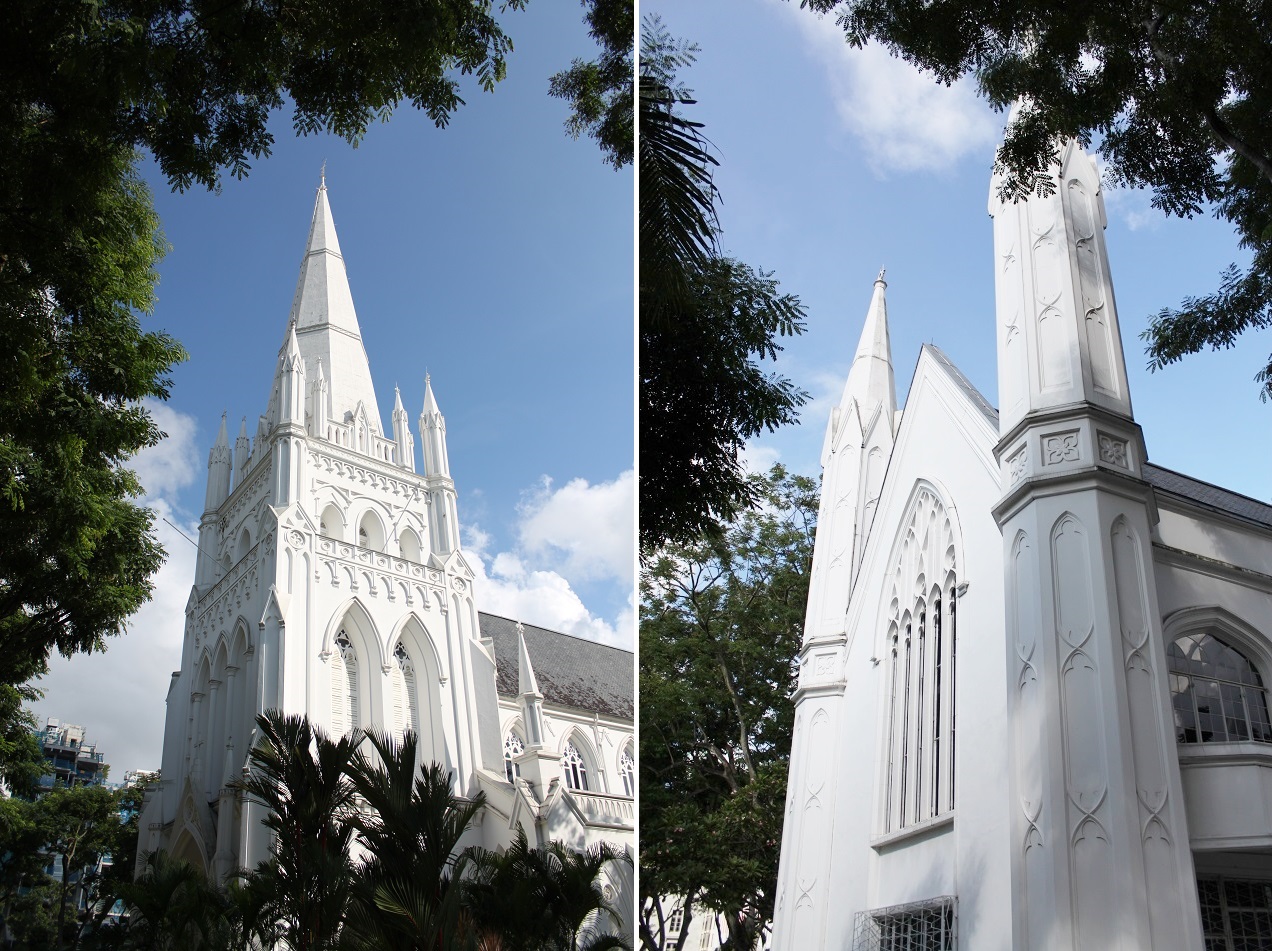
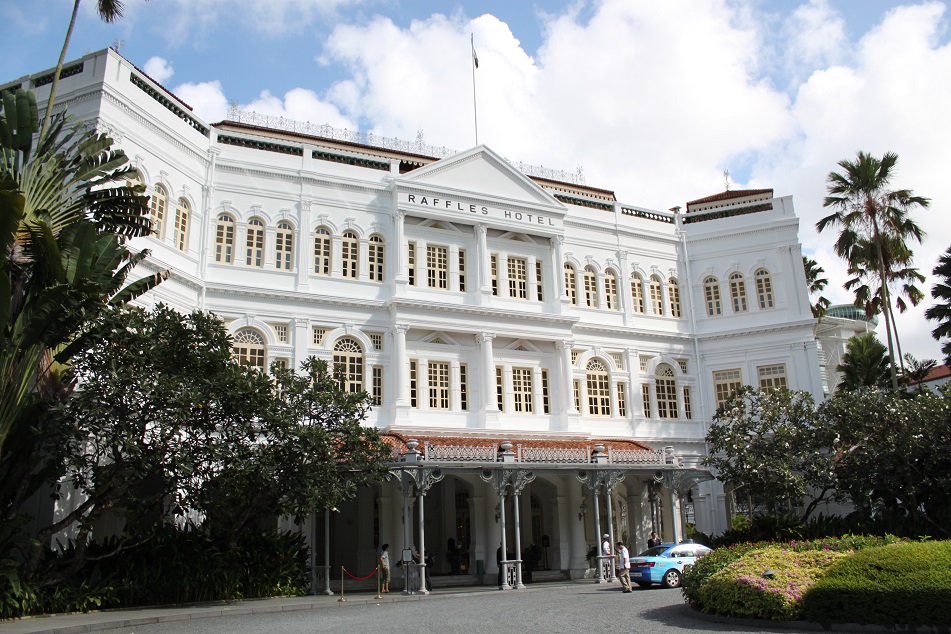

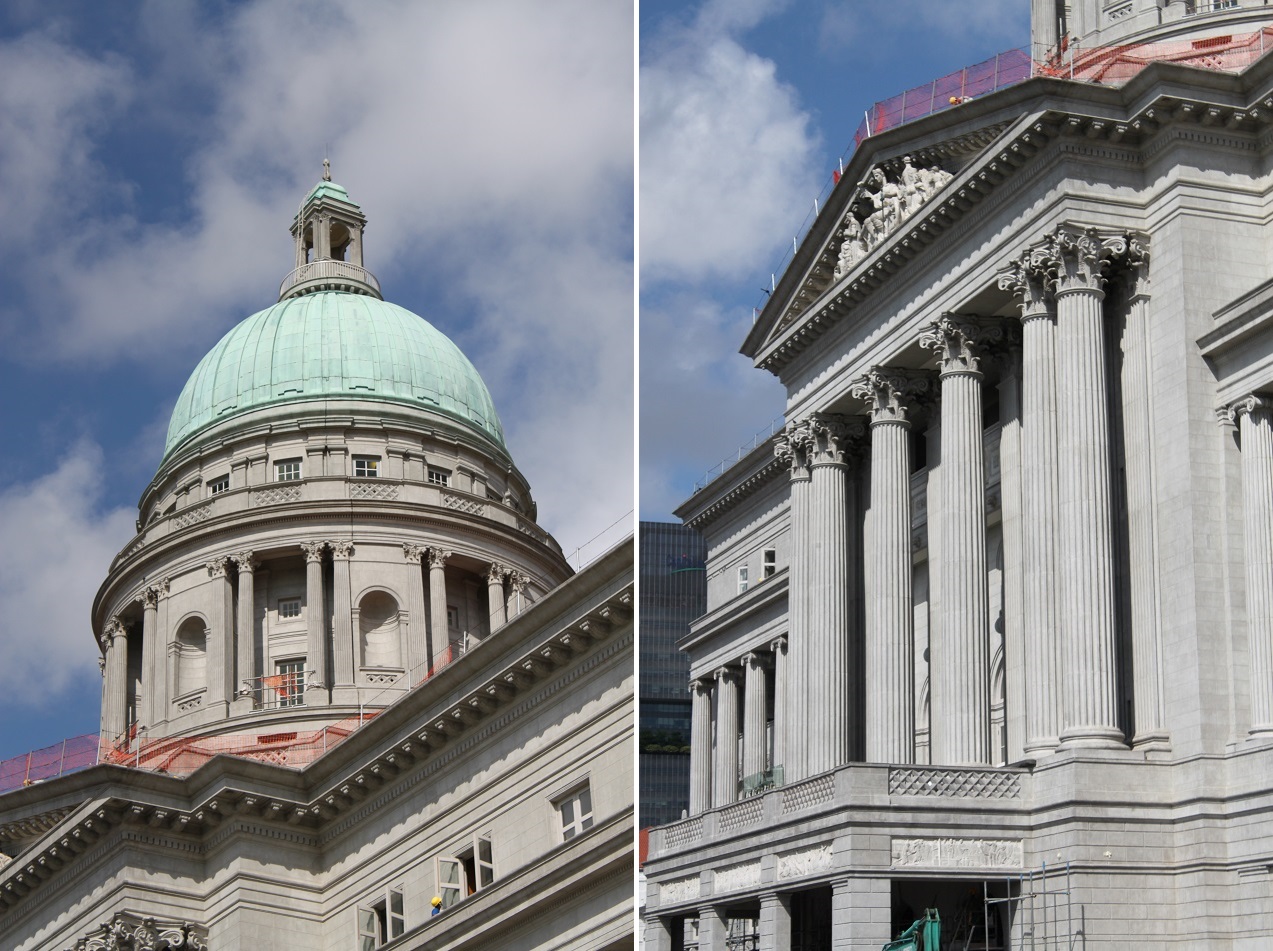
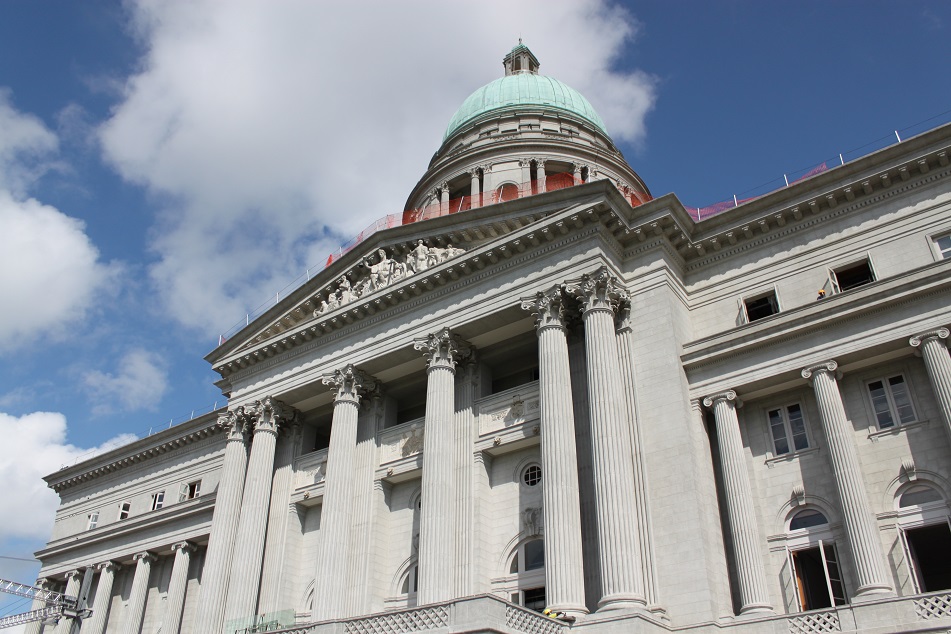


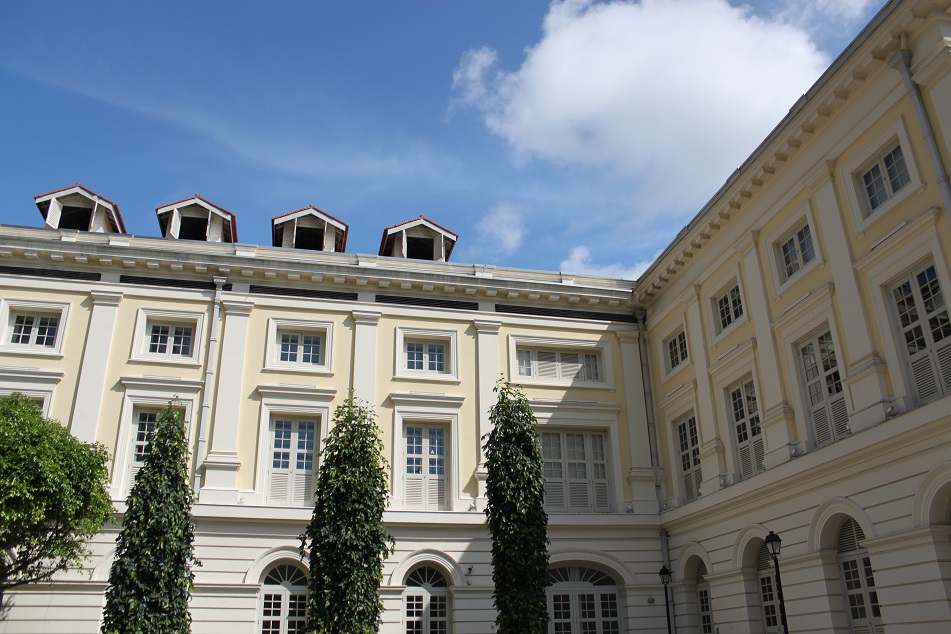

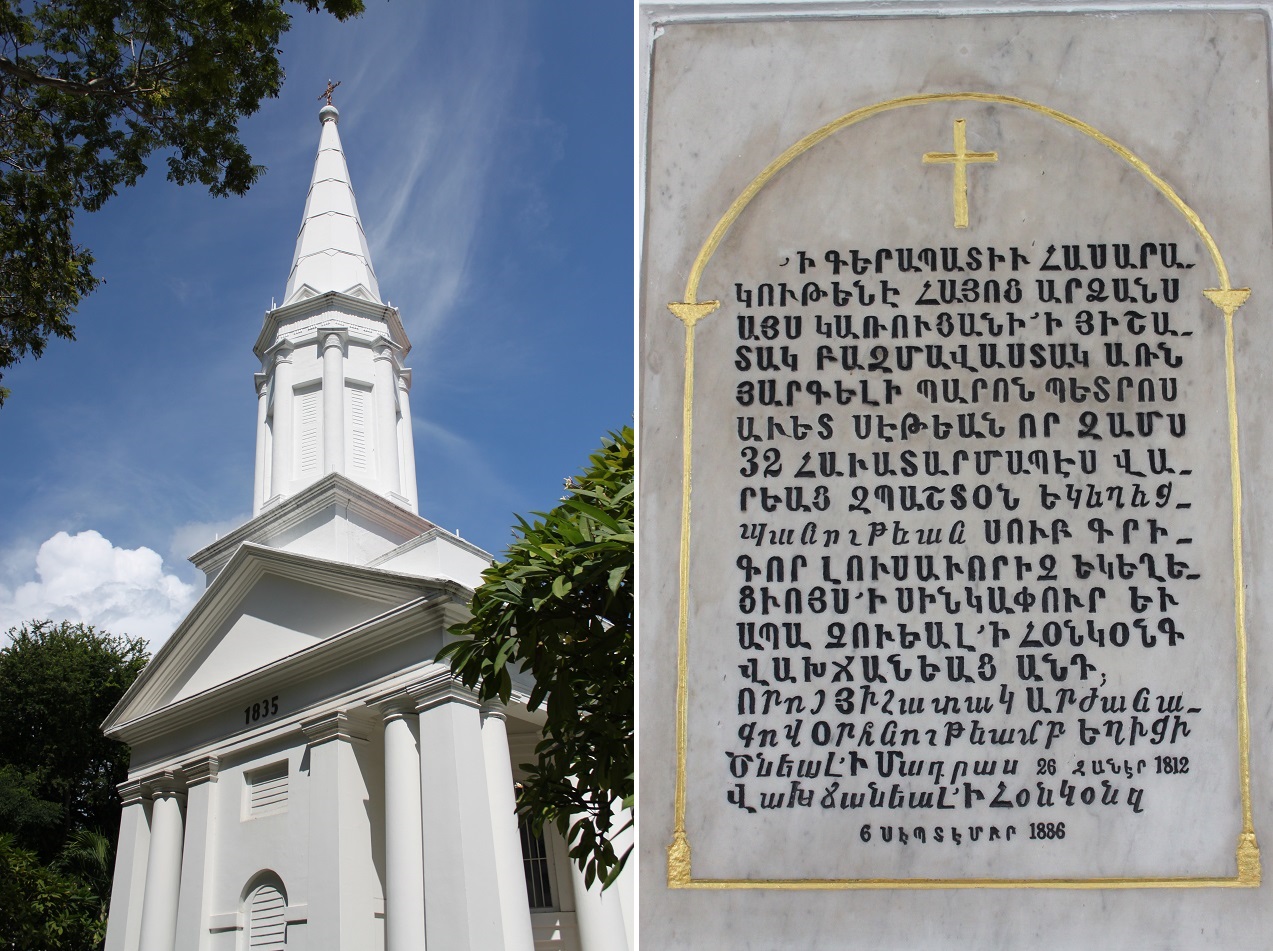
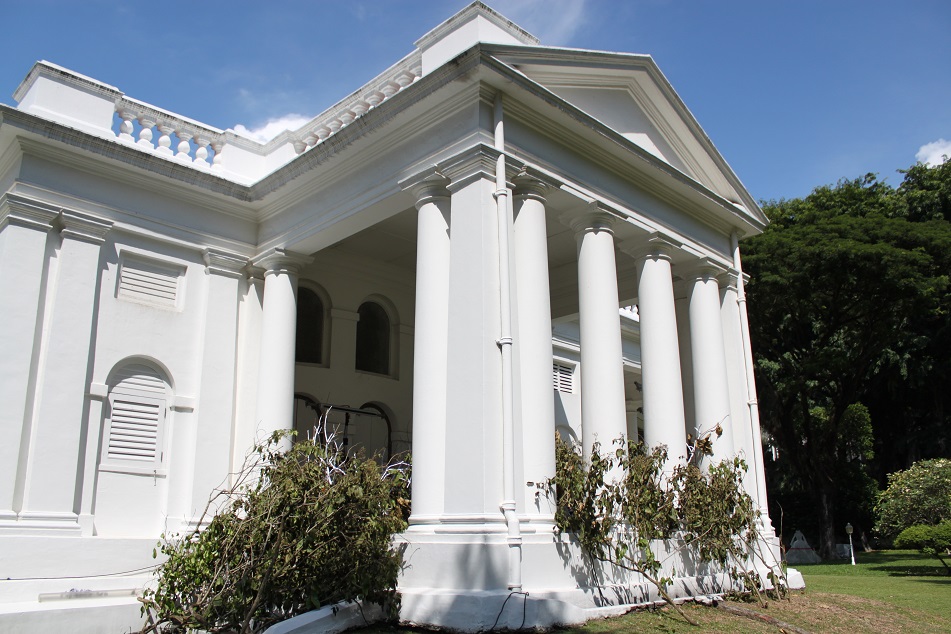
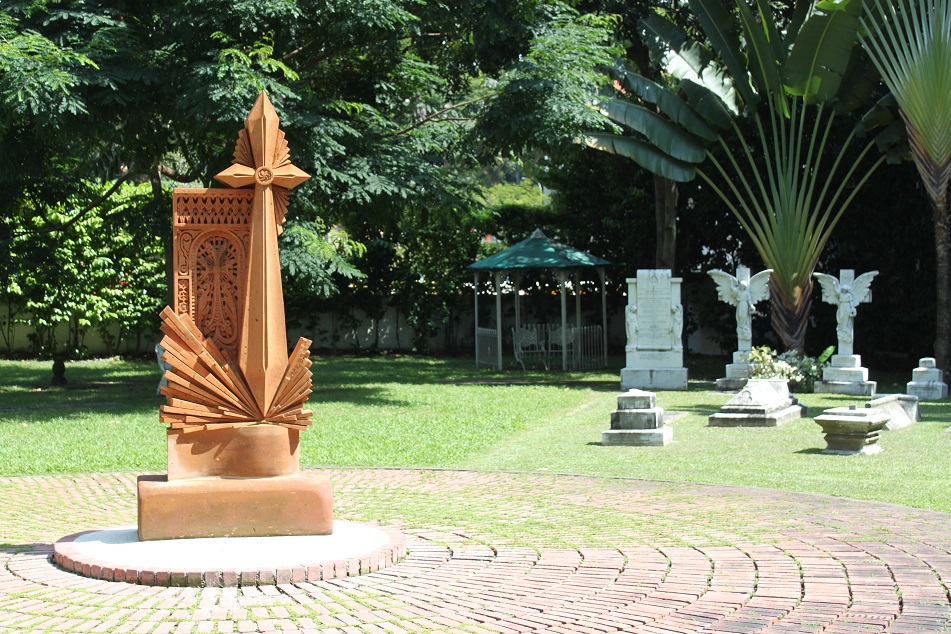
Beautiful images, Bama 🙂 These images reminds me of my last tour to this beautiful city state.
I totally agree with your views, Singapore takes special care on the conservation of it’s monuments.
You will never get tired of walking and exploring this wonderland 🙂
Thank you so much for sharing…
LikeLike
Thank you, Sreejith! I believe everyone else in the region should take Singapore as an example for colonial heritage preservation as the city state demonstrates how preservation brings huge benefits. That reminds me of Yangon which is said to have the largest collection of British colonial buildings in Southeast Asia — they should definitely learn from Singapore. Thanks again for dropping by, it’s nice to have you back here! 🙂
LikeLiked by 1 person
Such great architecture. The Neo-Classical Old Supreme Court reminds me of my hometown (Washington, D.C.).
LikeLike
When I was walking in front of that building it looked like some building I saw on the internet, maybe one in D.C. The Old Supreme Court truly was a magnificent building, it looked imposing and well-fitted for the thriving then-British colony.
LikeLike
Glad that you’ve enjoyed your time here, those old colonial architecture are some of my favourites too but we do have more in other areas as well…😄
LikeLike
Hi Sha. I really enjoyed walking around Civic District as it gave me a different perspective on Singapore. I remember seeing some colonial buildings at Fort Canning Hill and also around Marina Bay. Are there any areas in Singapore where that kind of structure is hidden from plain sight?
LikeLike
The ones that I can remember are really far away from the city centre though. There are the ones around changi area, close to changi village. These area has some old colonial houses that have since been turned into government chalets. I remembered I stayed in one of them a long time ago. Alternatively, somewhere closer would be sentosa island. Some of the buildings there and the fort there are remnants of the british presence. There are also those along adam road but these are usually residences so I imagine it’s private property. It’s quite expensive to buy and maintain though. Haha…I suppose I remember quite a number of spots. I happen to like colonial architecture which is why I noticed them. Are you in singapore now? 😄
LikeLike
Changi is an area in Singapore that I have yet to explore, maybe next time! I was surprised when you said there were some on Sentosa — I always thought it was just a resort island filled with modern tourist attractions, although I’ve heard a little bit of Fort Siloso. I’m actually in Jakarta now but the next time I come to Singapore I should check those places out. Thanks for the recommendation!
LikeLiked by 1 person
Sentosa used to have a british military base, especially during the war times, I think. Before it was remodelled, the old army barracks were really creepy and we used to scare each other with ghost stories of soldiers there when we had class trips to sentosa…hahaha..😄
LikeLike
Ahh I see. We all love to scare each other with ghost stories, don’t we? 🙂
LikeLike
Fantastic post, Bama. It’s an incredible city, one of my favourites. They have taken such great care of their heritage. Other (SE Asian) cities could learn a lot from Singapore.
LikeLike
I must admit that I didn’t expect to see British colonial buildings at such scale in the city, so I was pleasantly surprised. If only Jakarta retained much of its Dutch heritage it would have certainly become a more interesting city to visit. As you said, other SE Asian cities should learn from Singapore.
LikeLiked by 1 person
Singapore seems to be a rarity in its approach unfortunately I think, Bama. I’ve never been to Jakarta, but I agree with you – it’s nice to see the history of a city as well as where it is today.
LikeLike
Unfortunately it is. But as more and more cities take the same approach as Singapore did to its heritage and see the benefits of such action, old colonial buildings see a fairly brighter future. Hopefully.
LikeLiked by 1 person
Really nice architecture indeed! I second Jenny, Singapore is certainly taking care its heritage buildings better than other countries in South East Asia.
LikeLike
I was amazed by how grand the Old Supreme Court Building was, and the fact that that particular area of the city was filled with plethora of beautiful colonial buildings only brought an even bigger satisfaction, to me at least.
LikeLiked by 1 person
Such a pleasure to see well restored and maintained heritage architecture Bama. You are right, Singapore should serve as a role model in conservation to the entire region and the subcontinent. I love the funky painted windows of the police station! 🙂
LikeLike
I can imagine India has a fair share of grand British colonial buildings as well, but maybe not so well-preserved as the ones in Singapore. When I went to a museum in Hong Kong I learned that the city used to have a huge collection of beautiful colonial buildings, but sadly most of them had been torn down. While Singapore, Hong Kong’s arch rival, shows that economic growth doesn’t have to cost its colonial heritage. That police station was really fun to look at! 🙂
LikeLike
My interest in visiting Singapore waxes and wanes (only because there are so many places, so little time!), but these pictures are pretty motivating! Guess I’ll have to move it up on the list!
LikeLike
You’re not alone. It’s hard to think that Singapore is on the list of most people who travel to this part of the world as other countries in the region offer more diverse experiences. However the Singaporean government has been doing a really great job in making the city state an interesting place to visit, including preserving its colonial heritage. You should visit! 🙂
LikeLiked by 1 person
It is really impressive to see how much Singapore has conserved from its past. I have to say that the ruling British put in more effort in the grand civic buildings there compared to those in Hong Kong!
Sadly the government here has been very late to the party. Collective memory and conservation has only become fashionable in the past couple of years… and decades after the boom of the 70s-80s when we lost many of our best colonial structures. I can only get a sense of their beauty from old photos and the stories of my parents.
LikeLike
When we went to those museums earlier this year was the time when I realized that there were so many beautiful colonial buildings in Hong Kong decades ago. It’s really sad that we can only see them through photos now. Singapore shows not only to HK but also other cities in the world that economic growth, rapid development, and heritage conservation can go hand in hand. I thought of Yangon when I was writing this post since it has some of the most impressive British colonial buildings in Southeast Asia. Hopefully it learns from Singapore.
LikeLike
Bama everything looks so pristine and clean! Is everything in Singapore so spectacularly tidy? Great captures of the church and I appreciated the history you shared. The colourful police station is my favorite though. What a wonderful building.
LikeLike
Most streets and neighborhoods in Singapore do look tidy — you will get this sense of orderliness when you’re in the city. However some of my friends said that areas further away from the city center were not as gentrified. Had the police station not painted in such colors it would have looked just like other buildings, right? 🙂
LikeLiked by 1 person
Thanks for sharing this with me Bama. I guess you are right the colors stand out even more because of all the other pure white buildings! 🙂
LikeLike
You’re very welcome, Sue. 🙂
LikeLiked by 1 person
You can check out the National Museum and Singapore Art Museum for more colonial nostalgia. I like the Singapore Art Museum because it used to be my secondary school.
LikeLike
Actually I did go to the National Museum and I really loved it! All the displays were very interesting and the building itself was impressive. But I haven’t visited the Singapore Art Museum, maybe next time. I can imagine it must have rich historical values that the government decided to turn it into a museum.
LikeLiked by 1 person
Wow – these pictures are stunning. It certainly is nice to see a different perspective of Singapore. Thanks for sharing and I hope to visit one day.
xo
Kim
almosttheredc.wordpress.com
LikeLike
Thank you, Kim. On my first trip to Singapore back in 2010 I went to the touristy places, so for the second trip I thought exploring the city’s history was a nice thing to do. And it was and certainly didn’t disappoint!
LikeLike
The Singapore Sling is so good! The first time I tried it was in Sri Lanka. I really want to go to Singapore, it’s a good news the preserved they historical sites. Greetings!
LikeLike
I’ve never had it myself, but since it’s very iconic I guess I should give it a try the next time I visit Singapore. It’s very interesting that you tried it for the first time in Sri Lanka rather than in its native Singapore. Hopefully when you come you’ll have an even better experience with Singapore Sling after strolling down the city’s colonial district.
LikeLiked by 1 person
Stunning post 🙂
LikeLike
Thank you! Glad you like it. 🙂
LikeLiked by 1 person
Beautiful pictures!
LikeLike
Thank you! I really appreciate your kind comment.
LikeLike
Wow, you took some spectacular photos there! 😀
LikeLike
Thank you, Lily. I must say I was quite lucky with the weather the day I went strolling around that part of the city.
LikeLike
Beautiful photos!
LikeLike
Thank you, Ema!
LikeLike
Yes, gue setuju bahwa pemerintah Singapura merawat gedung-gedung tuanya dengan baik. Itu yang bikin gue suka Singapura.
Jadi meskipun dia nggak punya gunung menjulang atau pantai pasir putih penuh pesona, pamornya tetap dikenal seantero dunia. One simple thing we surely should learn from this tiny country 🙂
LikeLike
Nah, sepertinya polanya mirip nih, negara-negara yang ‘gak punya apa-apa’ justru jadi kreatif karena keterbatasan itu. Di sini, tempat bagus banyak, tapi banyak yang jadinya kayak take it for granted. Sampah itu salah satu masalah yang paling bikin saya geregetan. As you said, we should learn from Singapore on how to manage tourism industry in a more sustainable way.
LikeLike
Iya, mas.
Aku harap Kemenparekraf yg sekarang lebih peduli dengan wisata dalam kota. Jadi, mulai dari objek-objek yg mudah dijangkau, setelah itu aku yakin objek wisata alam di sekitarnya akan ikut terangkat.
Jakarta itu punya semuanya kalau aku bilang. Wisata sosial, kuliner, historis, budaya, bahkan alam. Tinggal gimana perawatan dan promosinya. Biar Jakarta setara dengan ibukota Asia Tenggara yg lain 🙂
LikeLike
Betul! Tapi itu gak cuma PR-nya Kemenpar (udah gak pake -ekraf kan sekarang?), tapi juga pemerintah kota/daerah. Kalo liat iklannya Enjoy Jakarta di TV kok ya kayaknya Jakarta nyaman banget, haha. 🙂
LikeLike
Betul. Pemerintah Daerah harus peduli. Warganya juga harus peduli 😀
LikeLike
It is really impressive with photos. It bring me back to miss past time.
LikeLike
Thank you, Leny. Singapore’s British colonial district surely is one photogenic corner of the city.
LikeLike
Bam, just had the chance to re-visit your blog. And as always, your writings can’t stop to amaze me 🙂 Beautiful pictures.
I agree with your statement about how Singapore did a great job in preserving their buildings, even better than HK.
Thanks for the review anyway, and coincidentally I will be in SG for christmas so I already had some ideas about what to do after reading your blog. 🙂
LikeLike
Hi Ki, great to see you here! 🙂 You’re really too kind, but thank you.
Have you been to the National Museum? I really recommend it, oh and also the Peranakan Museum. But I also recommend places like Gardens by the Bay (go to the Cloud Forest) if you haven’t been to. Have a great time in Singapore soon!
LikeLike
Gorgeous pictures. I have been to Singapore many years ago. Beautiful city.
LikeLike
Glad this post brings back some good memories of the city to you — thanks for your kind comment!
LikeLiked by 1 person
Your photos are beautiful! I especially love the one of the police station with the multicoloured shutters.This is partly because the combination of the bright colours and the white building just looks awesome, but also because I took a photo of the exact same building out the window of a taxi when I went to Singapore when I was eight years old! I had never known what the building was and had just liked it because it was colourful! Now I know 🙂
LikeLike
Thank you, Bec! I really appreciate that. I didn’t know that the police station has always been painted with such playful colors since a long time ago — I thought it was just another modern touch the city was very keen to embrace. So we both learn new things here. 🙂
LikeLike
It is great to have you walk us through these great streets of Singapore…thanks Bama. It’s been about a decade since I have been there, so it was nice to revisit the Lion City with your post. There is something I find fascinated and elegant of the colonial architecture, and Raffles Hotel to me is one of the highlights. Great photos ~ and a great write up.
LikeLike
Thank you, Randall. My first trip to Singapore was in 2010, and on my second trip four years later there were parts of the city I barely recognized. It has been developing really dramatically and I believe five years from now it will continue to surprise me. So imagine your next trip to Singapore — I wonder how much of the city you will still recognize, apart from the Merlion, of course. Raffles Hotel to me looked so imposing but welcoming at the same time. Such a beautiful work of art and architecture it is.
LikeLike
I do look forward to heading back to Singapore…I cannot even begin to imagine the changes. That is great way to describe Raffles Hotel, and some of the other classical buildings of the colonial era ~ art and architecture.
LikeLike
Hi, I visited Singapore a couple of years back, but I didn’t get an opportunity to see this cathedral. Hopefully, if I go back to Singapore, I can pay it a visit. Looks really amazing.
And great blog, BTW. I’ve always been interested in traveling, but my lack of time and funds always put a damper on my interest. Oh, well. 🙂
LikeLike
It’s easy to miss this cathedral as it’s located not far from Singapore’s more famous sights: the Merlion, Esplanade, and Marina Bay in general. You should come again to Singapore, and since it’s been ten years since your last trip to the city you would probably not recognize many things when you come again in the future. The skyline particularly is changing rapidly.
Thank you! Glad you enjoyed this blog. As for money, well, for me I have to cut unnecessary costs and travel frugally since I don’t make millions of dollars. 🙂 You can do it!
LikeLike
Hi Bama, you beautifully showcased the colonial architectures of Singapore.It has been a while since I have been in Singapore, but I truly did admire the colonial buildings amidst the ultra-modern structures. I also give credit to the Singaporean government for doing a great job in preserving them. I noticed that most travelers to Singapore these days, especially the ones from Asia (I can specifically speak for my family & friends from the Philippines), pay more attention to the commercial parts of Singapore (Universal Studios, Shopping Malls, etc) and sadly overlook its colonial treasures.
LikeLike
That’s another thing Filipinos and Indonesians have in common, Marisol. A lot of my friends also pay more attention to the usual touristy places as you mentioned. Not that it’s wrong, but Singapore has more than just glitzy malls, Universal Studios, and such — and it often gives a wrong impression to those who have never been to the city that Singapore is very boring. Btw, I really loved the Spanish colonial buildings in Manila — I found them much more interesting than Dutch buildings in Jakarta. 🙂
LikeLike
Pingback: A Day of Retreat at Stanley | What an Amazing World!
Hi, I liked this post of yours and would like to share this and a few others on my site http://www.hellomusafir.com. The post will be shared under your name with a link to this site.
LikeLike
Hi Hridesh. Thank you for sharing my post, I really appreciate it, and most importantly I’m glad that you enjoyed this post.
LikeLike
Hi Bama,
Here is the link to your post that I have shared on my site
http://www.hellomusafir.com/blog/colonial-splendor-of-the-lion-city
LikeLike
Hi Hridesh, thanks again for sharing my post and notifying me in advance!
LikeLike
Pingback: The Red Dot: A Matter of Being Too Perfect | What an Amazing World!